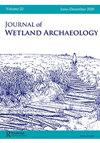Palaeoenvironmental Reconstruction from Sediments at West Quay Road, Southampton
Q1 Arts and Humanities
引用次数: 2
Abstract
Abstract This detailed study of a 13m deep borehole from West Quay Road, Southampton documents estuary evolution over the Holocene in a locality which has received little attention in the literature. The work was undertaken by the Museum of London Archaeology Service Geoarchaeology department. The sediment sequence along with evidence from pollen, plant macrofossils, diatoms, ostracods, snails and radiocarbon dating shows the gradual drowning of the valley from the Lateglacial to the historic period. The evidence shows shifts in floral and faunal communities as coastal and estuarine habitats encroach inland with sea-level rise. Thick fen carr peat developed from the early Mesolithic over river terrace gravels and freshwater channels, while Boreal forest thrived in the surroundings. As tidal environments became more influential, a mosaic of reed beds and salt marsh pools developed by the late Mesolithic. A period of estuary contraction is indicated by the growth of freshwater sedge fen around the early to mid Neolithic, followed by clear marine transgression and persistence of estuarine mudflat environments into the historic period. The work supports the three phase model of Holocene estuary development of Long et al. (2000) which concluded that regional processes control estuary evolution. Although small-scale, this project contributes to the wider palaeogeographic and palaeoenvironmental picture within the Solent, and initiatives such as this form the backdrop for archaeological studies in the region. The length of the sedimentary archive and the amount of information gained show the value of geoarchaeological boreholes undertaken as part of developer-funded projects.南安普敦西码头路沉积物的古环境重建
摘要:本文对南安普敦西码头路(West Quay Road)一个13米深的钻孔进行了详细研究,记录了一个文献中很少关注的地方全新世的河口演化。这项工作是由伦敦考古博物馆地质考古部门承担的。沉积物序列以及来自花粉、植物大型化石、硅藻、介形虫、蜗牛和放射性碳定年的证据表明,从冰川期到历史时期,山谷逐渐被淹没。证据表明,随着海平面上升,沿海和河口栖息地侵占内陆,植物和动物群落发生了变化。从中石器时代早期开始,在河流阶地砾石和淡水通道上形成了厚厚的沼泽泥炭,而北方森林则在周围蓬勃发展。随着潮汐环境的影响越来越大,中石器时代晚期形成了芦苇床和盐沼池的马赛克。新石器时代早期至中期为河口收缩期,以淡水莎草沼泽的生长为标志,进入历史时期后,明显的海侵和河口泥滩环境持续存在。该研究支持Long et al.(2000)全新世河口发育的三个阶段模型,该模型认为区域过程控制河口演化。虽然规模很小,但该项目有助于更广泛地了解索伦特地区的古地理和古环境,并且此类倡议为该地区的考古研究奠定了基础。沉积档案的长度和获得的信息量显示了地质考古钻孔作为开发商资助项目的一部分的价值。
本文章由计算机程序翻译,如有差异,请以英文原文为准。
求助全文
约1分钟内获得全文
求助全文
来源期刊

Journal of Wetland Archaeology
Arts and Humanities-Archeology (arts and humanities)
CiteScore
1.40
自引率
0.00%
发文量
6
期刊介绍:
The Journal of Wetland Archaeology publishes a wide range of contributions in all fields of wetland archaeology. It includes scientific and methodological features, geoprospection, environmental reconstruction, wetland hydrology, cultural aspects of wetland archaeology, as well as conservation, site management, legislation, and site protection. All periods and all geographic regions are covered.
 求助内容:
求助内容: 应助结果提醒方式:
应助结果提醒方式:


